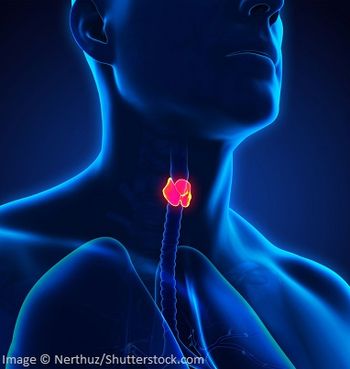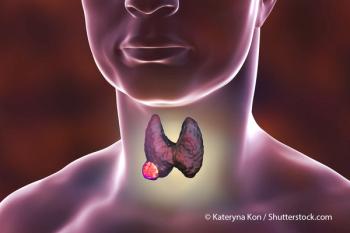
- ONCOLOGY Vol 15 No 12
- Volume 15
- Issue 12
FDG-PET Detects Thyroid Cancer Better Than Conventional Imaging
Fluorodeoxyglucose positron-emission tomography (FDG-PET) detected recurrent cancer 50% more often than did conventional imaging in people with thyroid cancer who had indications that their cancer had recurred, according to results of
Fluorodeoxyglucose positron-emission tomography (FDG-PET)detected recurrent cancer 50% more often than did conventional imaging in peoplewith thyroid cancer who had indications that their cancer had recurred,according to results of a study published in the October 2001 issue of the Journal of Nuclear Medicine. Indeed, use of the FDG-PET scan led to changes inclinical management in almost 80% of patients.
The study evaluated 37 persons with differentiated thyroid carcinoma, who hadelevated levels of thyroglobulin and negative iodine-131 (I-131) whole-body scanresults after a thyroidectomy and radioactive iodine treatment. An elevatedhuman thyroglobulin (hTg) level is a strong indicator that the cancer persistsor has recurred.
Some patients with metastases do not concentrate I-131, and there areindications that they are more likely to have aggressive disease. Finding a wayto locate tumors when evidence suggests recurrence but I-131 scan results arenegative is, therefore, particularly important.
PET Uncovers Additional Sites of Disease
Of the 37 patients who underwent FDG-PET scanning, 28 (76%) had positivefindings. Conventional imaging of the same patients (ultrasound, magneticresonance imaging [MRI], computed tomography [CT], and x-ray) produced positiveresults in only 10 cases (27%). Among the 10 patients in whom conventionalimaging did not detect a tumor, FDG-PET detected an additional 11 sites ofdisease, including distant metastases in 5 patients. Among those whose cancerwas only detected by the PET scan, 44 different tumor sites were detected.
Overall, the FDG-PET scan findings changed the management of 29 patients; 23underwent surgery, and disease was confirmed in 20. In three patients, pathologydetermined that the high FDG uptake was the result of inflammatory disease, foran overall true-positive rate of 70%.
"Our study shows that PET detects significantly more disease thanconventional images for these cancer patients. We believe that a PET scan shouldbe added as a first-line investigative tool to look for disease when there is anegative I-131 posttherapy scan yet the patient’s thyroglobulin levels arehigh," said study coauthor Dr. Badia O. Helal, Hôpital Antoine Béclère,Clamart, France.
Articles in this issue
about 24 years ago
Bill Would Increase NCI Research on Blood Cancersabout 24 years ago
American Cancer Society Launches New and Improved Websiteabout 24 years ago
A Breast Cancer Journeyabout 24 years ago
Exisulind Significantly Inhibits Tumor Growth With Minimal Side Effectsabout 24 years ago
DEA Head Stresses Legitimate Need for Pain Medicationabout 24 years ago
Survey Finds Women Have Many Misperceptions About Breast CancerNewsletter
Stay up to date on recent advances in the multidisciplinary approach to cancer.

















































































